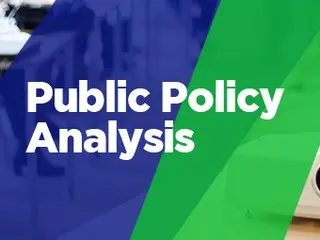Harvard University is ranked first in Social Policy and University of Michigan-Ann Arbor is placed in second.
Social policy primarily refers to guidelines, principles, legislation and activities that affect the living conditions conducive to human welfare. The Department of Social Policy at the London School of Economics defines social policy as "an interdisciplinary and applied subject concerned with the analysis of societies' responses to social need. It seeks to foster in its students a capacity to understand theory and evidence drawn from a wide range of social science disciplines, including economics, sociology, psychology, geography, history, law, philosophy and political science. (read more at wiki)
Academic Factors Comparison Between Best Colleges in Social Policy Major
3 public and 7 private schools are ranked in the top 10 Social Policy colleges. The average acceptance ratio of the schools is 21.20% where Harvard University has the tightest acceptance ratio of 5% and University of Wisconsin-Madison has the highest ratio of 53%. Total 297,203 students are enrolled into best Social Policy schools where New York University has the largest population with 50,550 students and Brandeis University has the smallest with 5,729 students. The average graduation rate is 91.80% and the average students to faculty ratio is 10.20:1 at those colleges.
Next table shows the academic information and key facts of the best Social Policy colleges including acceptance ratio, graduation rates, student population, and students to faculty ratio.| Rank | Name | Acceptance Rates | Graduation Rates | Population | Student-Faculty Ratio |
|---|---|---|---|---|---|
| 1 | Harvard University Cambridge, MA | 5% | 97% | 29,908 | 7:1 (14.29 %) |
| 1 | University of Michigan-Ann Arbor Ann Arbor, MI | 29% | 91% | 44,718 | 12:1 (8.33 %) |
| 3 | University of Wisconsin-Madison Madison, WI | 53% | 85% | 42,582 | 18:1 (5.56 %) |
| 4 | University of Chicago Chicago, IL | 8% | 94% | 15,775 | 6:1 (16.67 %) |
| 5 | Princeton University Princeton, NJ | 7% | 97% | 8,181 | 5:1 (20.00 %) |
| 6 | University of California-Berkeley Berkeley, CA | 17% | 92% | 40,154 | 18:1 (5.56 %) |
| 7 | Duke University Durham, NC | 11% | 95% | 15,735 | 7:1 (14.29 %) |
| 8 | New York University New York, NY | 32% | 85% | 50,550 | 10:1 (10.00 %) |
| 9 | Brandeis University Waltham, MA | 33% | 90% | 5,729 | 10:1 (10.00 %) |
| 9 | University of Southern California Los Angeles, CA | 17% | 92% | 43,871 | 9:1 (11.11 %) |
| Average | 21.20% | 91.80% | 297,203 (Total) | 10.20:1 (9.80 %) |
Best Social Policy Colleges 2018 Tuition & Fees Comparison and 2019 Estimated Costs
Next table lists 2017-2018 tuition & fees and compares the costs between Best Social Policy Colleges. The 2017-2018 costs are officially published by IPEDS, U.S. Department of Education. The estimated costs for year 2018-2019 are calculated and estimated based on each school's tuition rates last year.
For the undergraduate programs, the average tuition & fees of best Social Policy schools is $48,833 where University of Chicago has the most expensive costs with $56,034 and University of Wisconsin-Madison has the lowest amount of tuition with with $34,783. The average graduate tuition & fees of best Social Policy schools is $44,125 where University of Chicago has the highest tuition with $57,000 and University of Wisconsin-Madison has the lowest amount of tuition with with $25,314.
| Rank | School Name | 2018 Tuition & Fees | 2019 Estimated Tuition & Fees | ||
|---|---|---|---|---|---|
| In-State | Out-of-State | In-State | Out-of-State | ||
| 1 | Harvard University | $48,949 | $50,898 | ||
| 1 | University of Michigan-Ann Arbor | $14,826 | $47,476 | $14,357 | $47,953 |
| 3 | University of Wisconsin-Madison | $10,533 | $34,783 | $10,578 | $36,956 |
| 4 | University of Chicago | $56,034 | $59,816 | ||
| 5 | Princeton University | $47,140 | $49,054 | ||
| 6 | University of California-Berkeley | $14,170 | $42,184 | $14,863 | $44,276 |
| 7 | Duke University | $53,500 | $55,832 | ||
| 8 | New York University | $50,464 | $51,906 | ||
| 9 | Brandeis University | $53,537 | $55,931 | ||
| 9 | University of Southern California | $54,259 | $56,309 | ||
| Average | $13,176 | $48,833 | $13,266 | $50,893 | |
| Rank | School Name | 2018 Tuition & Fees | 2019 Estimated Tuition & Fees | ||
|---|---|---|---|---|---|
| In-State | Out-of-State | In-State | Out-of-State | ||
| 1 | Harvard University | $45,958 | $47,587 | ||
| 1 | University of Michigan-Ann Arbor | $22,696 | $45,484 | $23,635 | $47,369 |
| 3 | University of Wisconsin-Madison | $11,988 | $25,314 | $12,033 | $25,359 |
| 4 | University of Chicago | $57,000 | $59,245 | ||
| 5 | Princeton University | $48,940 | $50,722 | ||
| 6 | University of California-Berkeley | $14,170 | $29,272 | $14,863 | $29,948 |
| 7 | Duke University | $52,617 | $54,712 | ||
| 8 | New York University | $43,848 | $45,379 | ||
| 9 | Brandeis University | $48,808 | $49,021 | ||
| 9 | University of Southern California | $44,013 | $45,789 | ||
| Average | $16,285 | $44,125 | $16,844 | $45,514 | |



